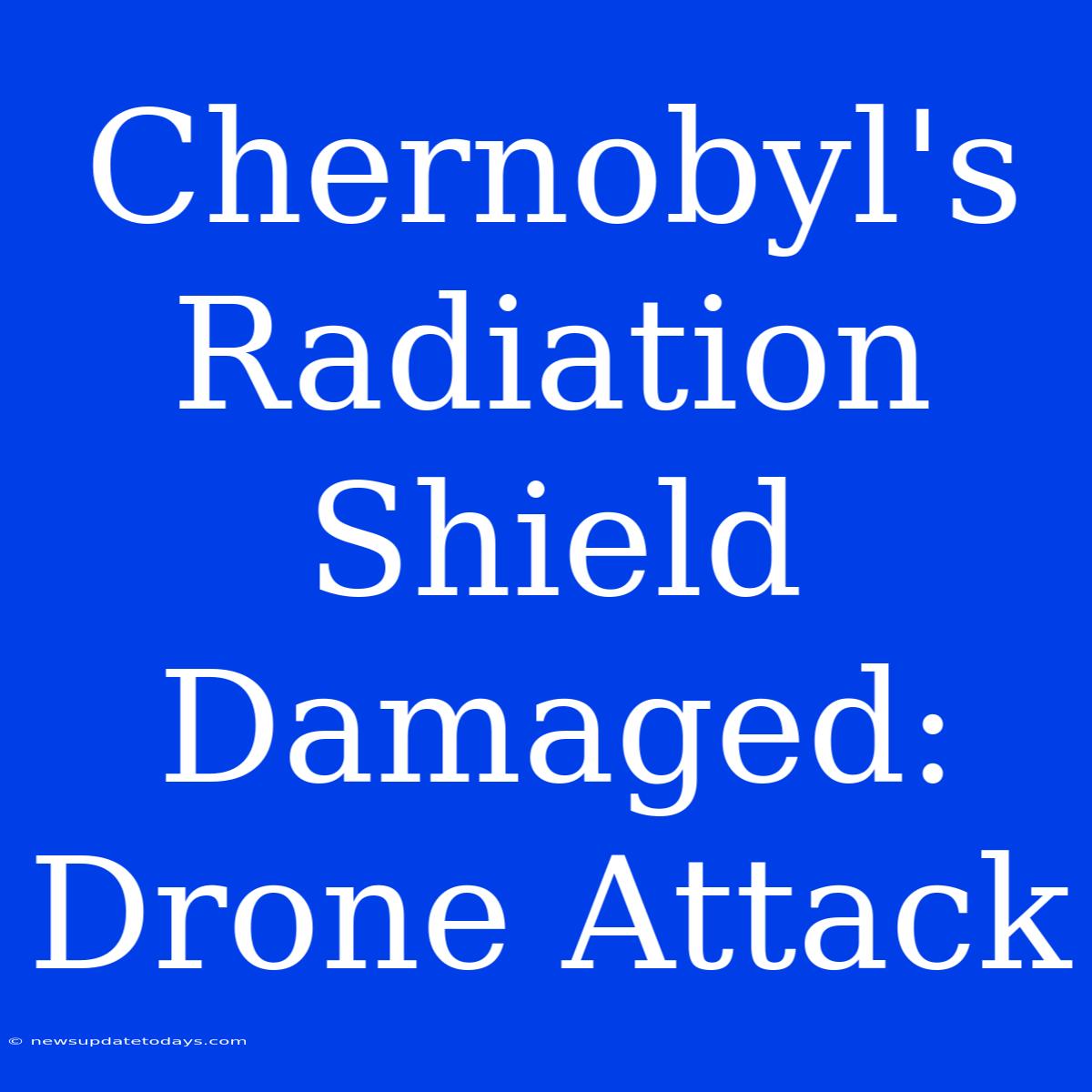Chernobyl's Radiation Shield Damaged: Drone Attack Raises Nuclear Fears
The recent drone attack on the Chernobyl nuclear power plant has raised serious concerns about the integrity of the sarcophagus, the massive structure built to contain the radioactive materials from the 1986 disaster. While the immediate impact appears limited, the long-term implications for the environment and global security remain a significant worry.
The Attack and Its Consequences
Reports suggest a drone strike damaged a section of the radiation shield, though the extent of the damage is still under investigation. The vulnerability exposed by this attack highlights the precarious situation at Chernobyl, a site that continues to pose a significant radiological threat despite the protective measures in place. The incident underscores the urgent need for enhanced security measures to prevent future attacks and protect this sensitive location.
Long-Term Risks and Environmental Concerns
Even minor damage to the sarcophagus could have far-reaching consequences. The potential release of radioactive materials into the environment could lead to:
- Increased radiation levels: This poses a significant health risk to nearby populations and wildlife. Long-term exposure to radiation can lead to various cancers and other health problems.
- Contamination of water sources: Radioactive materials could leach into groundwater and surface water, contaminating drinking water supplies and affecting aquatic ecosystems.
- Spread of radioactive dust: Wind could carry radioactive dust over large distances, potentially contaminating agricultural land and impacting food safety.
The ecological impact of further radioactive contamination could be catastrophic, threatening already fragile ecosystems in the Chernobyl Exclusion Zone.
The Need for Enhanced Security and International Cooperation
The attack serves as a stark reminder of the ongoing risks associated with Chernobyl. International cooperation is crucial to ensure the long-term safety and security of the site. This includes:
- Strengthening security measures: Investing in advanced security technologies and personnel to prevent future attacks is paramount. This might involve deploying advanced surveillance systems and bolstering physical security measures.
- International monitoring: Establishing a robust international monitoring system to track radiation levels and detect any potential leaks or breaches is essential.
- Collaboration and information sharing: Facilitating information sharing and collaboration between international organizations and national authorities is vital to respond effectively to any future incidents.
The Future of Chernobyl: A Looming Threat?
The drone attack on Chernobyl's radiation shield serves as a wake-up call. While the immediate consequences may be contained, the long-term risks remain significant. Addressing these risks requires a comprehensive strategy involving enhanced security, international cooperation, and a sustained commitment to safeguarding this sensitive location. The world cannot afford to ignore the lingering threat posed by Chernobyl. The future safety of the site and its surroundings depends on proactive measures and a concerted global effort.

